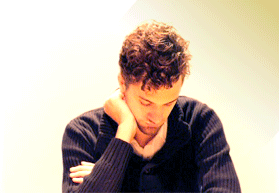Right now, I’m sitting on an airplane. I mean, I’m not actually sitting on the airplane. I’m in it. Because, if I were on top of it, I wouldn’t be bored. I’d be terrified.
Without access to the interwebz, I have nothing to do. I’ve finished my book and I’m too much of an introvert to make small talk with the man sitting next to me.
I’m bored. This lingering boredom lasts all of four minutes before I remember the mantra I say to my students (and to my kids at home). Boredom is a choice. So, I pull out a pad of paper. The flight attendant announces complimentary snacks and beverages. So, I sketch out what ultimately becomes this video:
Afterward, I start rethinking the pedagogy course I’m going to be teaching next semester. I sketch out a sprawling web of ideas, connecting seemingly random strategies, resources, and concepts. I write a quick reflection. I pen a blog post. I glance at my phone. A grand total of 80 minutes has passed and I still have two hours.
I’m bored again. I’m irritated. I’m jealous of the people who can sleep on the planes. So, I open my notebook up again and start scribbling out the ideas for a novel. What begins with a few lines turns into pages of notes. My hand is turn black from the ink. I pop my knuckles a few times and keep going. I’m in the zone. Nothing can distract me. I add a web, sketch out a few characters and add to a list of questions. I’m lost in a world of my making. Which is why it’s awkward when the flight attendant says, “Sir, I really need you to put your tray table down.”
Looking back at it, I’m not surprised that I was able to hit a state of flow on the plane. It’s not the first time that boredom has led to creative breakthroughs (though to be honest, I’m a little amazed that humans can be bored while sitting in a metal container being hurled through the air at insane speeds). Some of my ideas have come while I’m stuck in traffic or on a long run.
More Boredom?
It turns out my experience is actually pretty common. Several researchers have demonstrated that boredom can lead to increased creativity. I know, I know. We often hear that schools are boring and that this boredom is what kills creativity. But there’s some fascinating research on the role of boredom in promoting creative thinking.

credit: Wikimedia Commons
In the first study, conducted by Sandi Mann and Rebekah Cadman, participants had to copy names from a phonebook. It wasn’t even a cool phonebook with fantasy names like Dumbledore or Flitwick. It was a standard phonebook that pretty much nobody uses anymore.
After participants copied the names from the phonebook, they engaged in divergent thinking exercises where they had to come up with multiple uses for an object. This bored group scored higher in divergent thinking than the control group.
They later modified this study by having participants read the phone book instead of writing out the names. This group reported higher levels of boredom and proved more successful in the divergent thinking exercise of naming multiple uses for an object.
The second study (by Karen Gasper and Brianna Middlewood) required people to watch videos that would elicit specific emotions. The group that watched only boring videos had to then look at three objects that were seemingly unrelated and determine how they were related. Unlike the first study, this group’s activity was focused more on convergent thinking.
Note the differences in both studies. The first experiment required participants to engage in a tedious, repetitive task. However, they were actively engaged in it. The second study required participants to sit passively through boring content. The first focused in divergent thinking and the second focused on convergent thinking.
However, both studies demonstrated that a period of boredom actually increased the level of creative thinking afterward. This doesn’t surprise me. There’s a reason so many authors were highly productive in their early years while they worked in repetitive manual labor. It’s not surprising, too, that many of those same authors have developed rituals that seem, well, boring. There’s a reason that teachers often come up with amazing ideas during a meeting on policy compliance.
What Does This Mean For Schools?
After looking at both studies, I have more questions than answers. Is the source of boredom a sort-of undistracted clarity? Could something like mindfulness and meditation lead to the same results? Does it make a difference if someone is passively consuming boring content versus actively doing a boring task? Does the boredom force people to look within and find a creative distraction? Is it a negative reinforcement? Or is it more a matter of creating silence and space? Does self-imposed boredom have a different effect than externally imposed boredom? Do the results vary with age groups or developmental levels?
Despite these questions, this research challenges the idea that schools should never be boring. Perhaps a certain number of boring tasks might actually increase creative output later. We tend to want to distract ourselves from boredom. But maybe certain limitations on distractions (including technological or social distractions) might be what students need to hit that deeper focus that leads to better creative work.
This isn’t a call to make school more boring. But I can’t help but wonder what positive role boredom can play in a creative classroom. Maybe, in the huge focus on student engagement, we miss the creative power of daydreaming in the midst of a lull. Maybe the frantic pace of schools and the desire to keep students entertained is actually getting in the way of the type of space needed for creative thinking.
I thought you might enjoy this article, In Defense of Boredom
https://www.brainpickings.org/2015/03/16/boredom/?mc_cid=d0d0fe5880&mc_eid=3a5f09ed05